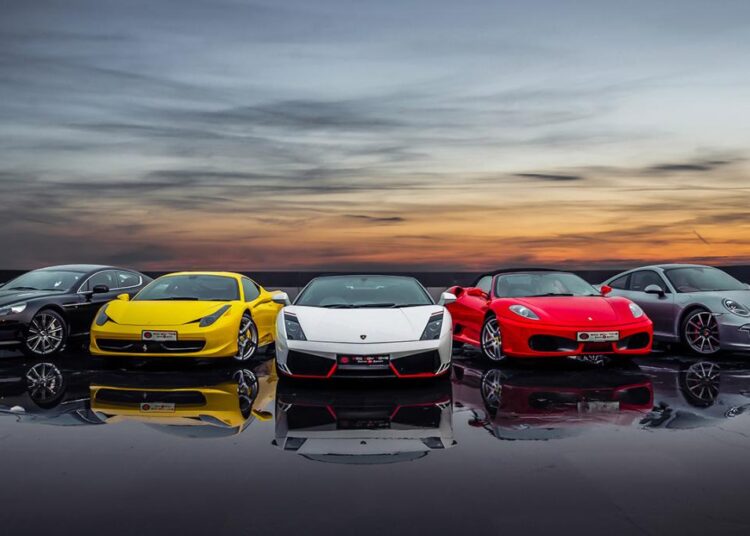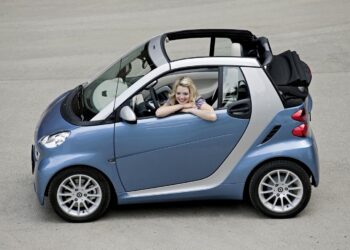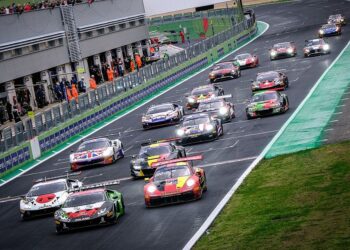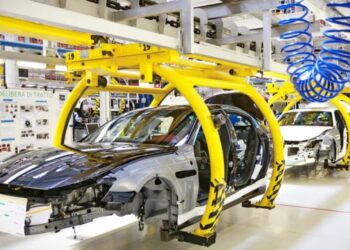Why Sports Cars Are Thriving
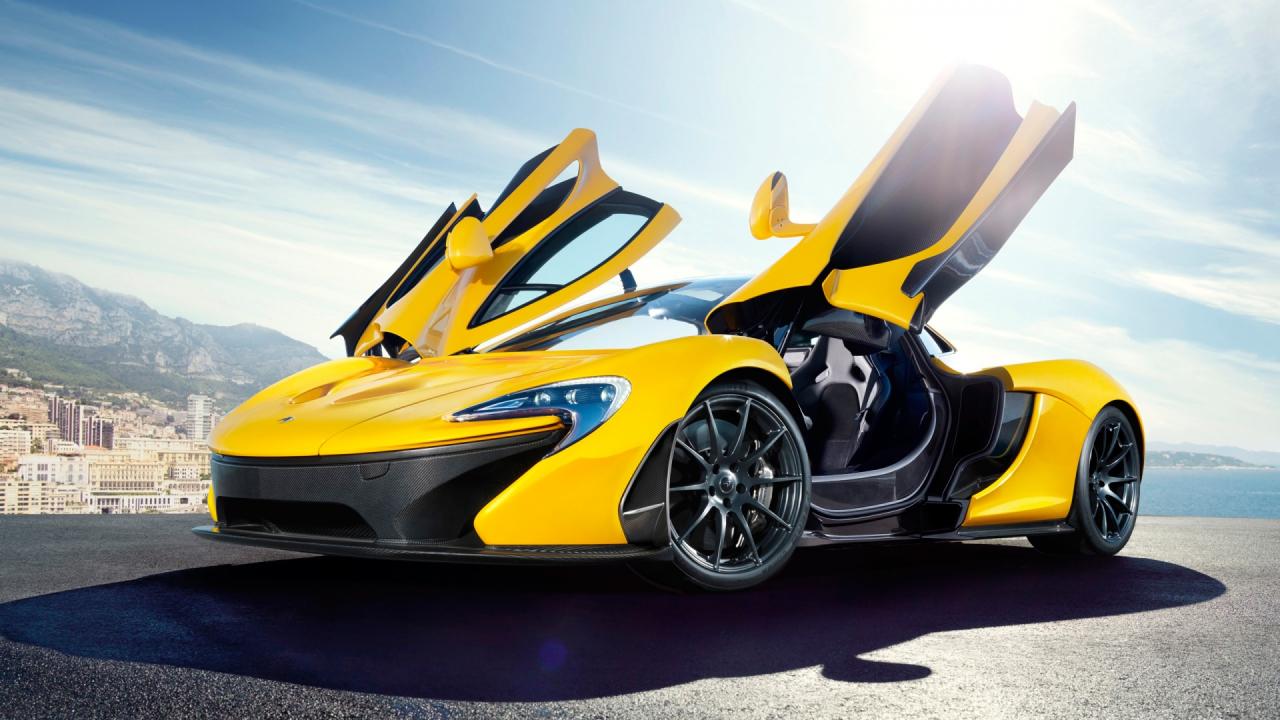
The resurgence of the sports car market is a multifaceted phenomenon, driven by a combination of technological advancements, evolving consumer psychology, and strategic positioning by manufacturers.
A. The Enduring Thrill of Driving
At its core, the appeal of a sports car is deeply rooted in the fundamental human desire for excitement, control, and performance.
- Visceral Driving Experience: Unlike ever-more-isolated luxury cars, sports cars offer a direct, unfiltered connection between driver and road. The roar of the engine, the feel of the steering, and the responsiveness of the chassis create an immersive and exhilarating experience.
- Precision Engineering: Every component, from the suspension geometry to the brake calipers, is meticulously designed and tuned for optimal performance, providing exceptional handling, grip, and stopping power.
- Acceleration and Speed: The sheer thrill of rapid acceleration and high top speeds is an intoxicating draw for many. Modern sports cars push the boundaries of what’s possible on public roads and track.
- A Sense of Control: In an increasingly automated world, the ability to fully command a powerful machine offers a unique sense of empowerment and skill.
- Adrenaline Rush: Driving a sports car, especially on a winding road or track, provides an unparalleled rush of adrenaline that few other activities can match.
This fundamental enjoyment of driving is an evergreen factor that continues to draw enthusiasts.
B. Technological Renaissance
Modern sports cars are not just powerful machines; they are showcases of cutting-edge automotive technology, enhancing both performance and drivability.
- Advanced Powertrains: While internal combustion engines remain dominant, they are now often hybridized or feature sophisticated turbocharging, direct injection, and variable valve timing for incredible power delivery, efficiency, and responsiveness.
- Sophisticated Transmissions: Lightning-fast dual-clutch transmissions (DCTs) and highly refined automatics offer seamless gear changes, maximizing acceleration and keeping the engine in its optimal power band. Manual transmissions, though rarer, are still offered by some for the purist experience.
- Active Aerodynamics: Moveable spoilers, wings, and active aero elements optimize downforce and reduce drag, improving high-speed stability and cornering grip.
- Adaptive Suspension Systems: Electronically controlled dampers and air suspensions can instantly adjust ride stiffness to suit various driving conditions, from comfortable cruising to aggressive track driving.
- Torque Vectoring and Electronic Differentials: These systems precisely distribute power to individual wheels, enhancing cornering agility, traction, and stability, allowing drivers to push limits more safely.
- Carbon Fiber and Lightweight Materials: Extensive use of lightweight materials reduces overall vehicle weight, improving power-to-weight ratio, handling, and fuel efficiency.
- High-Performance Braking Systems: Massive carbon-ceramic or multi-piston steel brakes provide incredible stopping power, resistant to fade even under extreme track conditions.
- Digital Cockpits and Telemetry: Fully customizable digital instrument clusters provide track-focused data, lap timers, G-force meters, and performance analytics.
These technological marvels push the boundaries of what’s possible, making today’s sports cars faster, safer, and more engaging than ever before.
C. Aspirational and Lifestyle Appeal
Beyond performance, sports cars embody a certain lifestyle and serve as powerful status symbols.
- Status and Prestige: Owning a sports car often signifies success, discerning taste, and a passion for automotive excellence. Brands like Ferrari, Lamborghini, Porsche, and McLaren carry immense prestige.
- Exclusivity and Rarity: Many high-end sports cars are produced in limited numbers, making them highly sought after and exclusive, appealing to collectors and those who desire something unique.
- Design and Aesthetics: Sports cars are often sculpted works of art, with aggressive lines, aerodynamic profiles, and striking proportions that turn heads and evoke emotion.
- Community and Events: Ownership often provides access to exclusive clubs, rallies, track days, and events, fostering a sense of community among enthusiasts.
- Emotional Connection: For many, a sports car is more than just a vehicle; it’s a dream realized, a source of personal pride, and a form of self-expression.
- Investment Potential: Certain limited-production or iconic sports cars can appreciate in value, making them attractive assets for collectors.
This blend of aspiration and lifestyle integration fuels a significant portion of the market’s boom.
D. Diversification and Accessibility
The sports car market isn’t just about ultra-expensive supercars. It’s becoming more diverse, offering options across a wider price spectrum.
- Entry-Level Sports Cars: Models like the Mazda MX-5 Miata, Subaru BRZ, and Toyota GR86 offer an accessible entry point to the sports car experience, focusing on lightweight, balanced handling, and pure driving fun.
- Performance Sedans and Coupes: While not pure sports cars, vehicles like the BMW M3/M4, Mercedes-AMG C63, and Audi RS5 offer compelling performance in more practical packages, blurring the lines and bringing sports car-like dynamics to everyday usability.
- Electric Sports Cars: The emergence of high-performance electric vehicles (e.g., Porsche Taycan, Tesla Model S Plaid) is redefining what a “sports car” can be, offering astonishing acceleration and a different kind of driving thrill.
- SUV Crossovers: Performance-oriented SUVs (e.g., Porsche Cayenne Turbo, Lamborghini Urus) deliver sports car levels of power and handling in a more versatile body style, appealing to buyers who want both performance and practicality.
- Increasingly Sophisticated Niche Models: Track-focused variants, limited editions, and bespoke builds cater to very specific desires within the enthusiast community.
This broadening of the segment ensures that the “sports car experience” is available to a wider range of buyers, contributing to the overall boom.
The Market Dynamics
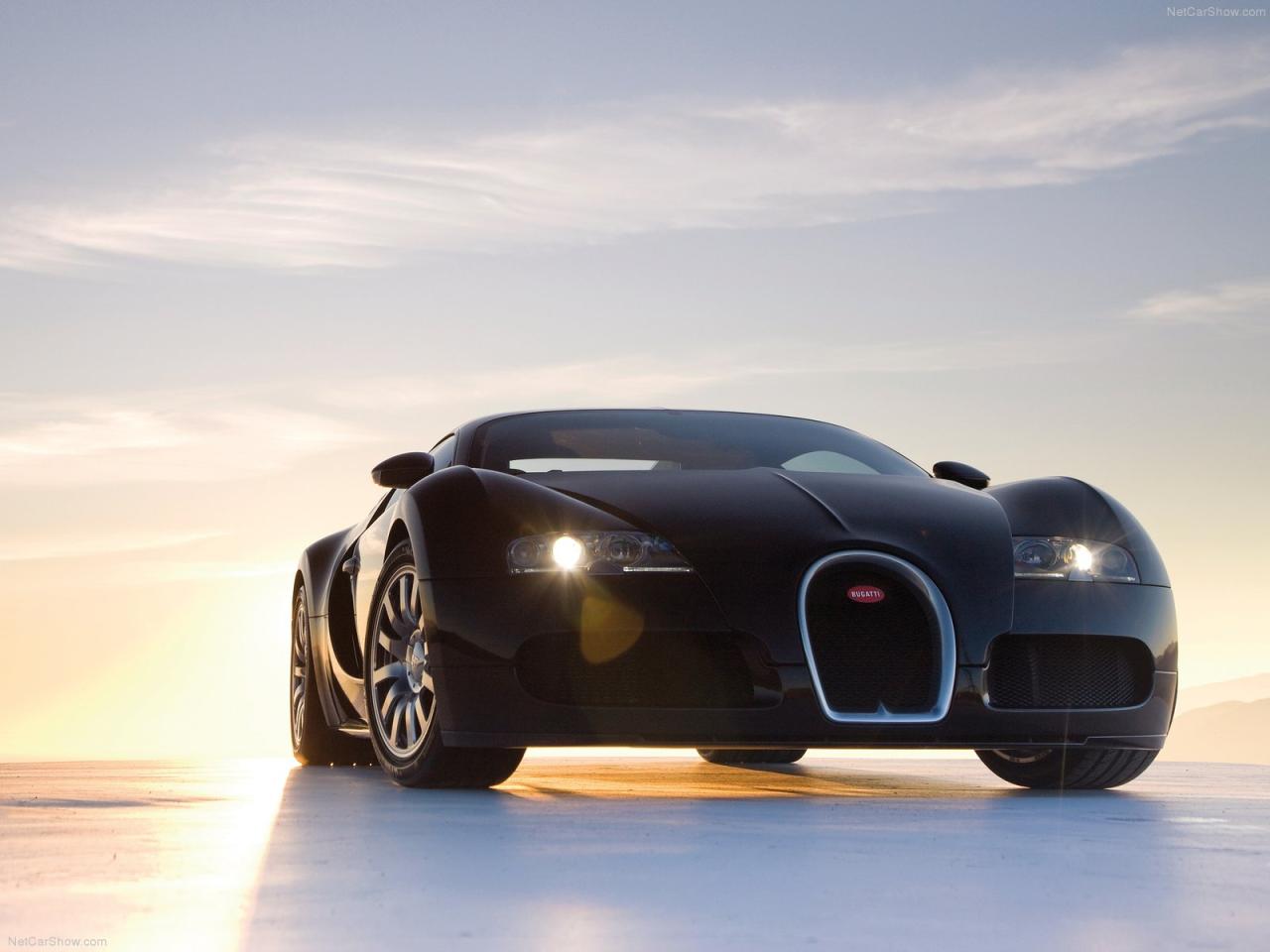
Several external and internal factors are converging to create a highly favorable environment for the sports car market.
A. Economic Recovery and Discretionary Spending
A strong global economy and increased discretionary income among affluent buyers are fundamental to the health of the luxury and performance segments.
- Wealth Creation: Periods of economic prosperity lead to more individuals having the financial capacity to purchase high-value assets like sports cars.
- Low Interest Rates: Historically low interest rates have made financing large purchases more attractive, encouraging investment in luxury goods.
- Post-Pandemic Demand: Following periods of lockdown, there’s been a noticeable surge in demand for experiential and aspirational purchases, including sports cars, as people seek to enjoy life and invest in passions.
- Luxury Market Resilience: The luxury market often demonstrates resilience during economic fluctuations, as its clientele is less affected by economic downturns.
These economic underpinnings provide the necessary foundation for market growth.
B. Strategic Product Launches and Innovation
Automakers are keenly aware of the demand and are responding with compelling new models and continuous innovation.
- New Model Introductions: Regular introductions of new or updated sports car models, often incorporating cutting-edge technology and design, keep the market fresh and exciting.
- Limited Editions and Collectibles: Manufacturers strategically release limited-production variants or special editions, creating exclusivity and driving immediate demand from collectors and enthusiasts.
- Electrification of Performance: The development of high-performance electric and hybrid sports cars is attracting a new generation of tech-savvy buyers and addressing environmental concerns without sacrificing speed.
- Enhanced Customization Options: Offering extensive personalization programs allows buyers to create truly unique vehicles, enhancing their perceived value and exclusivity.
- Aggressive Marketing and Brand Building: Luxury and performance brands invest heavily in marketing campaigns that emphasize heritage, performance, and lifestyle, reinforcing the aspirational appeal.
- Focus on Driver Engagement: Even with increasing automation, many manufacturers are making a conscious effort to retain and enhance the pure driving experience, recognizing it as a core value for sports car buyers.
This continuous flow of exciting new products and marketing efforts keeps the market vibrant.
C. Shifting Consumer Values (Experiences Over Possessions)
For some buyers, the value proposition of a sports car is evolving beyond mere ownership to encompass the experiences it enables.
- “Experience Economy”: Consumers are increasingly prioritizing experiences over material possessions. A sports car facilitates thrilling drives, track days, and exclusive events, becoming a tool for memorable experiences.
- Investment in Hobbies: For many, car enthusiasm is a deeply personal hobby, and a sports car represents an investment in that passion.
- Digital Engagement: The rise of car culture on social media and online platforms (YouTube, Instagram) amplifies the desirability of sports cars, allowing enthusiasts to share their experiences and connect with a global community.
- Therapeutic Escape: For some, driving a sports car offers a release from daily stresses, a form of meditation, or a way to reconnect with a pure, engaging activity.
This focus on the experiential aspect solidifies the sports car’s place in modern luxury consumption.
D. Legacy and Future Collector Value
Many buyers are not just looking for a car; they are looking for a piece of automotive history or a potential future classic.
- Brand Heritage: Iconic brands with rich racing histories add intrinsic value and allure to their sports cars.
- Limited Production Runs: Exclusivity enhances potential future collectibility and value appreciation.
- The “Last Hurrah” for ICE: With the industry’s inevitable shift towards electrification, there’s a growing sentiment among collectors that current high-performance ICE sports cars represent the pinnacle of a dying art form, making them highly desirable as future classics.
- Technological Milestones: Certain models are considered benchmarks of technological achievement, securing their place in automotive history and boosting their long-term value.
- Proven Track Record: Models with successful racing pedigrees or strong critical acclaim often hold their value better.
This long-term perspective adds another layer of appeal, transforming some purchases into an investment.
Challenges and Opportunities
While the sports car market is booming, it is not immune to the broader challenges and transformations facing the automotive industry.
A. Environmental Regulations and Emissions Standards
The most significant long-term challenge for traditional sports cars is increasingly stringent global emissions regulations.
- Carbon Neutrality Goals: Governments worldwide are pushing for carbon neutrality, which puts pressure on all internal combustion engine vehicles, including high-performance ones.
- Development Costs for ICE: Meeting new emissions standards requires significant R&D investment for ICE, making them more expensive to develop and produce.
- Zoning Restrictions: Some cities are implementing low-emission zones or even outright bans on ICE vehicles in certain areas, potentially limiting where sports cars can be driven.
- Fuel Availability: The long-term future of gasoline production and availability in a fully electrified world is a looming question.
- Transition to Electrification: Manufacturers must invest heavily in developing high-performance electric and hybrid sports cars that can still deliver the “thrill” factor without tailpipe emissions.
Adapting to these regulations while maintaining performance will be crucial for the segment’s future.
B. The Rise of Electric Performance
Electric vehicles (EVs) present both a challenge and an opportunity for the sports car market.
- Instant Torque: EVs offer incredible instant torque, leading to blistering 0-60 mph times that often surpass traditional gasoline sports cars.
- New Driving Dynamics: The low center of gravity from battery placement and precise electric motor control offers unique handling characteristics.
- Quiet Operation: While some enthusiasts miss the engine sound, others appreciate the refined, quiet acceleration of electric sports cars.
- Range and Charging: High-performance driving can deplete EV batteries quickly, and fast-charging infrastructure needs to keep pace with demand, especially for track use.
- Weight: Large battery packs add significant weight, which can be a challenge for nimble handling, though manufacturers are innovating to mitigate this.
- Emotional Connection: Replicating the emotional connection of a screaming V8 or a high-revving flat-six in an electric vehicle is a key challenge for designers.
The industry is actively exploring how to deliver the sports car experience in an electrified format.
C. Safety Features and Autonomous Driving Integration
While pure driver engagement is paramount, sports cars are not immune to the demand for advanced safety and convenience features.
- Integration of ADAS: Balancing advanced driver-assistance systems (ADAS) with the desire for driver control requires careful calibration.
- Weight and Complexity: Adding sensors, wiring, and computing power for ADAS can increase weight and complexity, which are counter to sports car philosophy.
- Cybersecurity: High-tech, connected sports cars are vulnerable to cyber threats, requiring robust security measures.
- Autonomous Driving Levels: While full autonomy may be undesirable in a sports car, partial automation for highway cruising or traffic jams could enhance usability without compromising the core experience.
The challenge lies in incorporating these features without diluting the essence of what makes a sports car appealing.
D. Market Saturation and Competition
As more manufacturers enter or expand their sports car offerings, competition intensifies.
- Brand Loyalty: Established brands enjoy strong loyalty, but new entrants or refreshed models can sway buyers.
- Niche Market Fragmentation: The market is increasingly fragmented into highly specific niches (e.g., track-focused, luxury GT, hypercars), requiring manufacturers to cater to very precise demands.
- Cost of Development: The high cost of R&D for specialized performance components and technologies.
- Global Market Variances: Consumer preferences and regulatory environments differ significantly across regions, requiring tailored product strategies.
- The “SUV Effect”: Performance SUVs offer a compelling alternative for buyers seeking both speed and practicality, potentially diverting some sales from traditional sports cars.
Manufacturers must continually innovate and differentiate their products to stand out in a competitive landscape.
E. Manufacturing and Supply Chain Rsilience
The complex supply chains for high-performance components can be vulnerable to disruptions.
- Specialized Components: Many sports cars rely on bespoke or highly specialized parts, making their supply chains more fragile.
- Global Events: Geopolitical events, natural disasters, or pandemics can severely impact production and delivery schedules, as seen in recent years.
- Raw Material Sourcing: Ensuring ethical and sustainable sourcing of high-demand materials for batteries (for hybrids/EVs) and lightweight materials.
- Skilled Labor: The manufacturing of high-performance vehicles often requires highly skilled labor and specialized craftsmanship.
Maintaining a resilient and adaptable supply chain is vital for consistent production and delivery.
Conclusion
The current boom in the sports car market is a testament to the enduring human fascination with speed, precision, and the pure joy of driving. Far from being a dying breed, these magnificent machines are experiencing a renaissance, driven by relentless technological innovation, strategic market positioning, and a consumer base that values the visceral thrill and aspirational lifestyle they embody. While environmental regulations and the rise of electric vehicles present significant challenges, they also fuel innovation, pushing manufacturers to reimagine performance in new, exciting ways. The future of the sports car might see more electrification and advanced technology, but the core essence – the connection between human and machine, the pursuit of driving perfection – will undoubtedly remain. The sports car is not just booming; it’s evolving, securing its place as an indispensable and exhilarating part of the automotive landscape for years to come. The roar, it seems, will continue.

